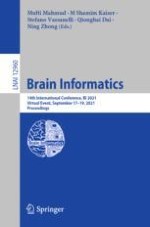2021 | OriginalPaper | Chapter
Explainable Boosting Machine for Predicting Alzheimer’s Disease from MRI Hippocampal Subfields
Authors : Alessia Sarica, Andrea Quattrone, Aldo Quattrone
Published in: Brain Informatics
Publisher: Springer International Publishing
Activate our intelligent search to find suitable subject content or patents.
Select sections of text to find matching patents with Artificial Intelligence. powered by
Select sections of text to find additional relevant content using AI-assisted search. powered by
